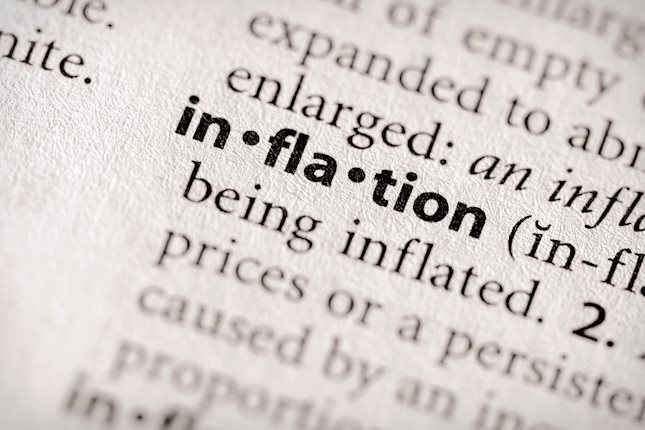- S&P 500 added 0.69% last week but closed well off intra-week high.
- Last week set up a bearish evening star doji pattern on the S&P 500 daily chart.
- Nearly one-third of the S&P 500 reports earnings this week.
- FOMC meeting on Wednesday will end with decision on fed funds rate.
- Microsoft, Meta Platforms, Alphabet and Visa release quarterly results.
The S&P 500 should experience higher-than-normal volatility this week as a number of newsworthy events converge to buffet the index in both directions. The index rose 0.69% last week as earnings season got underway, but the daily chart ended the week with an evening star doji pattern that typically forecasts a bearish reversal.
All eyes are on the Federal Reserve this week as July’s Federal Open Market Committee (FOMC) meeting takes place on Tuesday and Wednesday. Following Wednesday’s meeting, the FOMC will announce its decision on whether to raise the fed funds rate. The market wholeheartedly expects a 25-basis-point hike.
Throughout the week, the stock market’s largest companies will release their second-quarter results. Domino’s Pizza (DPZ) comes on Monday, followed by Microsoft (MSFT) and Visa (V) on Tuesday. Then Meta Platforms (META) and Coca-Cola (KO) release on Wednesday before Mastercard (MA) and McDonald’s (MCD) announce on Thursday. On Friday, Exxon Mobil (XOM) and Procter & Gamble (PG) finish off the week.
At the time of writing in Monday’s first hour of trading, S&P 500 futures are advancing 0.42%, while NASDAQ 100 futures rise 0.17%. Dow Jones futures are also in the green gaining 0.50%.
S&P 500 News: Earnings to lead the week's headlines
Almost one-third of the S&P 500 component companies – about 150 or more – will release earnings this week. Positive results or beats from the largest companies should push the index higher of course, while major misses could lead to a sea change in sentiment that ushers it lower.
Monday begins with Domino’s Pizza, one of the best-performing stocks of the last 15 years. Wall Street expects the pizza chain to earn $3.07 in GAAP earnings per share (EPS) on $1.07 billion.
The biggest company to report this week is Microsoft on Tuesday. There will be lots of high fives all around if the software king can beat Wall Street consensus of $2.55 in GAAP EPS on $55.5 billion in sales.
Alphabet (GOOGL) reports after the market closes on Tuesday as well. Analyst consensus is $1.34 in GAAP EPS on $72.75 billion in revenue.
Major telecommunications “failsons” Verizon (VZ) and AT&T (T) report earnings on Tuesday and Wednesday, respectively. Verizon is expected to report $1.15 in GAAP EPS on $33.32 billion in sales, while AT&T's consensus is at $0.61 in GAAP EPS on $29.95 billion in sales. Both stocks have lost plenty of ground year to date despite being beloved by dividend investors.
Meta Platforms — the owner of Facebook, Instagram and now Threads — reports late Wednesday as well. The market will watch to see if the social media leader has earned its 136% return year to date. Analyst consensus averages $2.91 per share in GAAP EPS on sales of $31.03 billion.
Exxon Mobil has had a more challenging quarter than initially expected, with global oil prices somewhat moderating. Wall Street is counting on $2.03 in GAAP EPS on revenue of $90.32 billion.
Market expects Fed to hike 25 bps on Wednesday
Fed Chair Jerome Powell will follow up the central bank’s decision on interest rates this Wednesday with further color on the state of the US economy in his post-meeting speech. Since the market is nearly certain in its belief that the Fed will raise the fed funds rate on Wednesday, the S&P 500 will likely move more based on the Chair’s guidance for upcoming meetings.
After June’s FOMC meeting, Powell predicted that the central bank would raise rates at two more meetings though it kept rates still in June. For the July meeting, the CME FedWatch Tool gives a 99.8% probability of a 25 bps rate hike. This would push the fed funds rate up to the 5.25% to 5.5% range.
The rate hike is largely priced in at the moment, but more hawkish rhetoric from the Fed Chair could lead to a sell-off among bank stocks. Inflation data has been quite impressive over the past few months, with the July core CPI inflation rate dropping to 4.8%. The US labor market has begun to loosen more recently, but the central bank appears unlikely to begin cutting interest rates until core CPI rate nears its 2% mandate.
Fed FAQs
What does the Federal Reserve do, how does it impact the US Dollar?
Monetary policy in the US is shaped by the Federal Reserve (Fed). The Fed has two mandates: to achieve price stability and foster full employment. Its primary tool to achieve these goals is by adjusting interest rates.
When prices are rising too quickly and inflation is above the Fed’s 2% target, it raises interest rates, increasing borrowing costs throughout the economy. This results in a stronger US Dollar (USD) as it makes the US a more attractive place for international investors to park their money.
When inflation falls below 2% or the Unemployment Rate is too high, the Fed may lower interest rates to encourage borrowing, which weighs on the Greenback.
How often does the Fed hold monetary policy meetings?
The Federal Reserve (Fed) holds eight policy meetings a year, where the Federal Open Market Committee (FOMC) assesses economic conditions and makes monetary policy decisions.
The FOMC is attended by twelve Fed officials – the seven members of the Board of Governors, the president of the Federal Reserve Bank of New York, and four of the remaining eleven regional Reserve Bank presidents, who serve one-year terms on a rotating basis.
What is Quantitative Easing (QE) and how does it impact USD?
In extreme situations, the Federal Reserve may resort to a policy named Quantitative Easing (QE). QE is the process by which the Fed substantially increases the flow of credit in a stuck financial system.
It is a non-standard policy measure used during crises or when inflation is extremely low. It was the Fed’s weapon of choice during the Great Financial Crisis in 2008. It involves the Fed printing more Dollars and using them to buy high grade bonds from financial institutions. QE usually weakens the US Dollar.
What is Quantitative Tightening (QT) and how does it impact the US Dollar?
Quantitative tightening (QT) is the reverse process of QE, whereby the Federal Reserve stops buying bonds from financial institutions and does not reinvest the principal from the bonds it holds maturing, to purchase new bonds. It is usually positive for the value of the US Dollar.
Earnings of the week
Monday, July 24 - Domino's Pizza (DPZ), NXP Semiconductors (NXPI).
Tuesday, July 25 - Kimberly-Clark (KMB), Microsoft (MSFT), Visa (V), Texas Instruments (TXN), Verizon (VZ), General Electric (GE), Alphabet (GOOG), and General Motors (GM).
Wednesday, July 26 - Meta Platforms (META), Coca-Cola (KO), Union Pacific (UNP), Boeing (BA), AT&T (T), Chipotle (CMG)
Thursday, July 27 - Mastercard (MA), AbbVie (ABBV), McDonald's (MCD), Comcast (CMCSA), Ford Motor (F), Intel (INTC), Bristol Myers Squibb (BMY).
Friday, July 28 - Exxon Mobil (XOM), Procter & Gamble (PG), Chevron (CVX).
What they said about the market – Michael Gapen
Bank of America economist Michael Gapen said he is fairly certain of a 25 bps rate hike on Wednesday and is more focused on guidance for the rest of the year.
"The cooling of the economy is only happening slowly, and we think most [FOMC] members believe further rebalancing of supply and demand is needed to ensure disinflation will continue."
S&P 500 forecast: Evening star pattern hints bearish swing?
The S&P 500 closed above 4,536 last Friday. That was just a hair below the 4,590 to 4,637 resistance zone. That zone of resistance comes from February and March of 2022 when the index was experiencing a bear market rally that failed to pan out.
The Relative Strength Index (RSI) is back at 68 on the daily chart, which shows there is still room for upside but not too much. A major rally this week would be surprising, based on this indicator, but a good time to sell would be in the area just north of 4,600. This rally has been going since early March and needs a timeout.
S&P 500 daily chart
The more thought-provoking bit of drama comes from the doji created on Wednesday. Netflix (NFLX) and Tesla (TSLA) earnings disappointed enough to send the index lower off its highs on Thursday.
This doji was sandwiched between a large bullish candle on Tuesday and a bearish candle on Thursday, which makes it look like an evening star pattern. That pattern is famous for foreshadowing a bearish reversal, so it would be quite unsurprising if some faction of traders has already decided to short the index.
Support sits at 4,500 and 4,325.
Evening star pattern on S&P 500 daily chart
Information on these pages contains forward-looking statements that involve risks and uncertainties. Markets and instruments profiled on this page are for informational purposes only and should not in any way come across as a recommendation to buy or sell in these assets. You should do your own thorough research before making any investment decisions. FXStreet does not in any way guarantee that this information is free from mistakes, errors, or material misstatements. It also does not guarantee that this information is of a timely nature. Investing in Open Markets involves a great deal of risk, including the loss of all or a portion of your investment, as well as emotional distress. All risks, losses and costs associated with investing, including total loss of principal, are your responsibility. The views and opinions expressed in this article are those of the authors and do not necessarily reflect the official policy or position of FXStreet nor its advertisers. The author will not be held responsible for information that is found at the end of links posted on this page.
If not otherwise explicitly mentioned in the body of the article, at the time of writing, the author has no position in any stock mentioned in this article and no business relationship with any company mentioned. The author has not received compensation for writing this article, other than from FXStreet.
FXStreet and the author do not provide personalized recommendations. The author makes no representations as to the accuracy, completeness, or suitability of this information. FXStreet and the author will not be liable for any errors, omissions or any losses, injuries or damages arising from this information and its display or use. Errors and omissions excepted.
The author and FXStreet are not registered investment advisors and nothing in this article is intended to be investment advice.
Recommended content
Editors’ Picks

EUR/USD recovers toward 1.0650 ahead of US inflation data
EUR/USD has found fresh demand and marches toward 1.0650 in European trading on Wednesday. The pair capitalizes on renewed US Dollar retreat but the further upside appears capped amid Germany's political instability and a cautiou market mood. Traders await US CPI data and Fedspeak for fresh directives.

GBP/USD struggles near 1.2750, awaits US CPI report
GBP/USD is struggling at around 1.2750 in the European session on Wednesday, unable to find any fresh impetus. Traders turn risk-averse and refrain from placing fresh bets on the pair ahead of the critical US CPI data and speeches from several Fed policymakers.

Gold price holds above $2,600 mark, bulls seem non committed ahead of US CPI
Gold price staged a modest recovery from a nearly two-month low touched on Tuesday. Elevated US bond yields and bullish USD cap gains for the non-yielding XAU/USD. Traders now look forward to the key US Consumer Price Index report a fresh impetus.

US CPI data set to confirm inflation ramped up in October as traders pare back Fed rate cut bets
As measured by the CPI, inflation in the US is expected to increase at an annual rate of 2.6% in October, a tad higher than the 2.4% growth reported in September. The core annual CPI inflation, excluding volatile food and energy prices, will likely remain at 3.3% in the same period.

Forex: Trump 2.0 – A high-stakes economic rollercoaster for global markets
The "Trump trade" is back in full force, shaking up global markets in the aftermath of the November 5th U.S. election. This resurgence has led to substantial shifts in both currency and bond markets, with the U.S. dollar index (DXY) jumping 2.0% + since election day.

Best Forex Brokers with Low Spreads
VERIFIED Low spreads are crucial for reducing trading costs. Explore top Forex brokers offering competitive spreads and high leverage. Compare options for EUR/USD, GBP/USD, USD/JPY, and Gold.